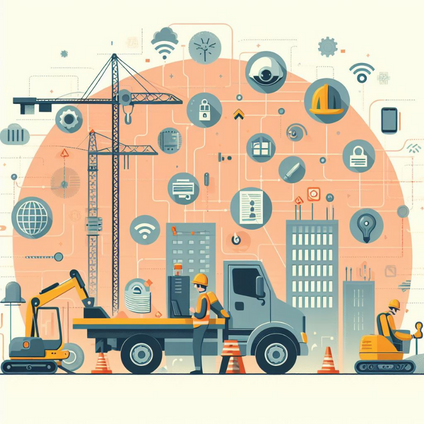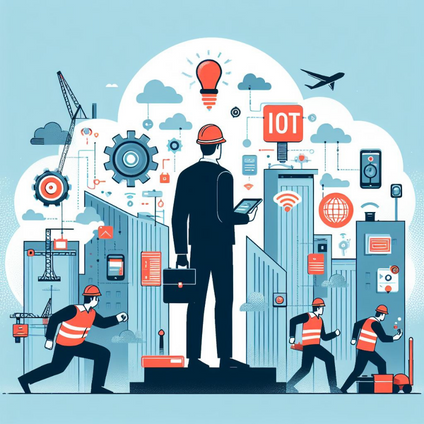The Evolotion of IoT in Construction

The Evolution of IoT in Construction: Revolutionizing the Building Landscape
The construction industry, often perceived as traditional and resistant to change, is undergoing a transformative phase with the integration of the Internet of Things (IoT). This technological marvel is ushering in a new era of efficiency, safety, and innovation, addressing longstanding challenges such as project delays, budget overruns, and safety concerns. Let's delve into how IoT is redefining the construction landscape, offering unparalleled advantages while navigating through potential challenges.
Understanding IoT: A Game-Changer for Construction
At its core, IoT refers to the intricate network of interconnected devices equipped with sensors, software, and other technologies that facilitate data exchange over the internet. This interconnected ecosystem has found its niche in various sectors, from healthcare to transportation. In construction, IoT's applications are multifaceted, encompassing job site management, equipment monitoring, safety enhancement, and project optimization.


Practical Applications: IoT's Impact on Construction
Enhanced Safety Measures
IoT-enabled sensors and devices provide real-time insights into environmental conditions, equipment status, and potential hazards. For instance, drones equipped with advanced sensors can conduct aerial surveys, monitor progress, and identify safety risks, thereby minimizing human intervention and potential accidents.
Optimized Performance and Efficiency
IoT streamlines construction processes by automating tasks, monitoring resource utilization, and ensuring timely delivery of materials. From real-time tracking of equipment to automated inventory management, IoT fosters a seamless workflow, reducing delays and enhancing productivity.
Maintenance and Resource Management
IoT facilitates predictive maintenance by monitoring equipment health, usage patterns, and performance metrics. This proactive approach minimizes downtime, extends equipment lifespan, and optimizes resource allocation, ensuring cost-effectiveness and operational efficiency.
Concrete Curing and Structural Health
IoT's application in concrete curing revolutionizes construction practices by providing real-time data on material strength, curing conditions, and structural integrity. This precision enables accurate scheduling, labor optimization, and adherence to quality standards, ensuring durability and safety.
Waste Management and Sustainability
IoT-driven waste management solutions monitor disposal practices, track recycling metrics, and ensure compliance with environmental regulations. By optimizing waste management processes, construction companies can minimize their carbon footprint, reduce costs, and promote sustainability.
Challenges and Considerations
While IoT promises transformative benefits, its adoption in construction is not without challenges. Factors such as high implementation costs, dependency on reliable connectivity, security concerns, and compatibility issues necessitate careful planning, investment, and expertise. Moreover, addressing resistance to change, establishing industry standards, and enhancing technical proficiency are crucial for realizing IoT's full potential in construction.
Embracing the Future: A Digital Transformation Journey
Despite initial hesitations, the construction industry's future is undeniably intertwined with IoT and digital transformation. As technology evolves, IoT's integration with artificial intelligence, machine learning, cloud computing, and Building Information Modelling (BIM) will further enhance construction practices, foster innovation, and drive industry growth.
The Internet of Things is not merely a technological trend but a catalyst for revolutionizing the construction industry. By leveraging IoT's capabilities, construction companies can overcome traditional constraints, unlock new opportunities, and pave the way for a smarter, safer, and sustainable future. As we embrace this digital transformation journey, collaboration, innovation, and adaptability will be pivotal in shaping a construction landscape where technology and tradition converge seamlessly.
